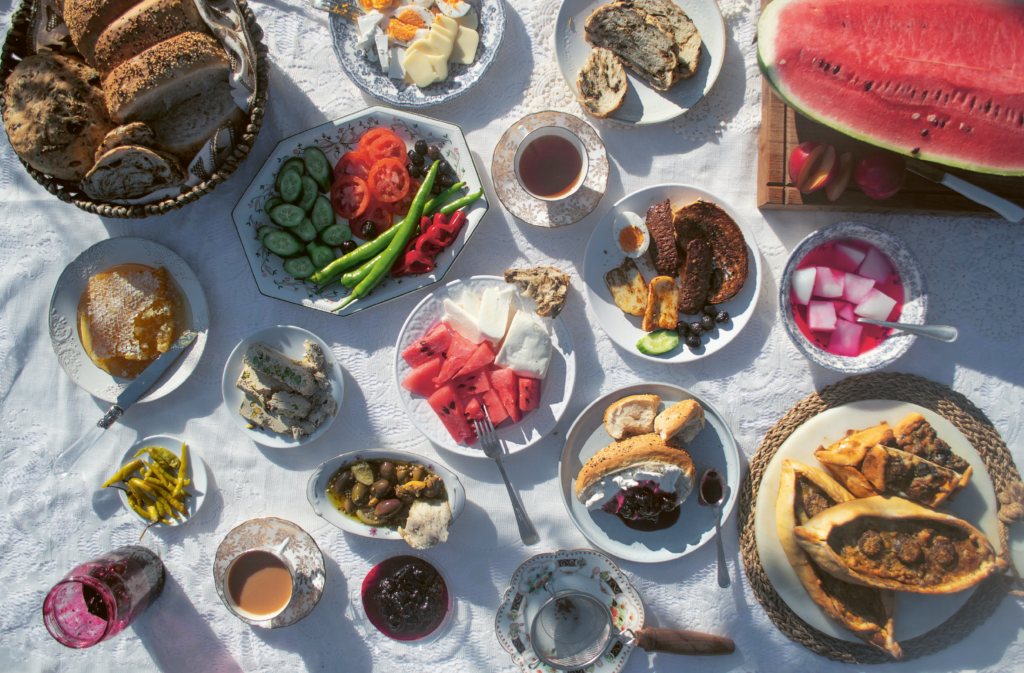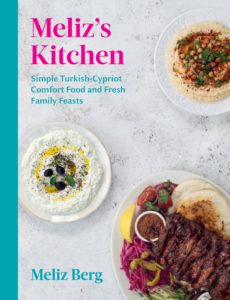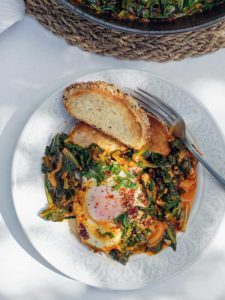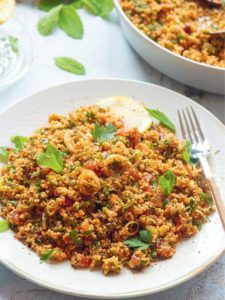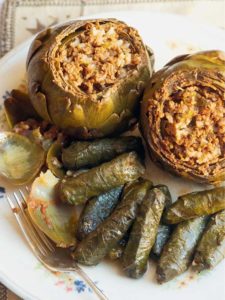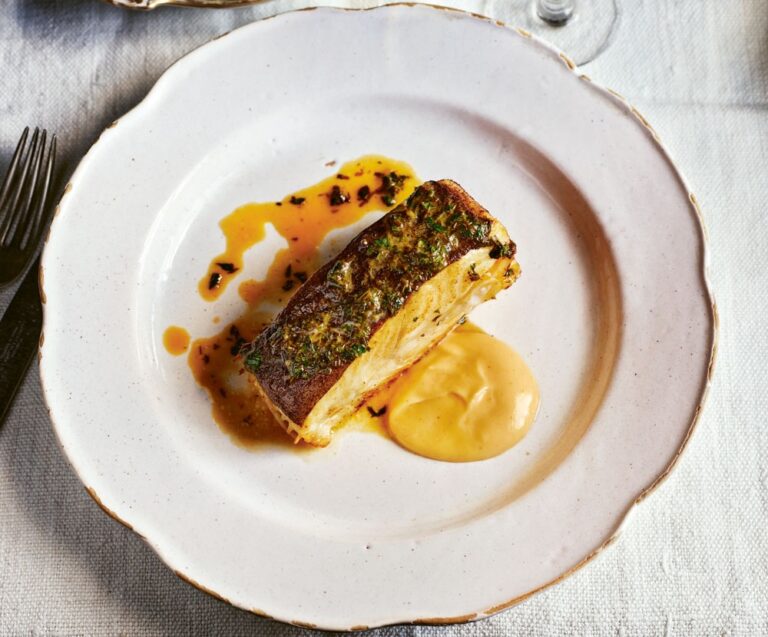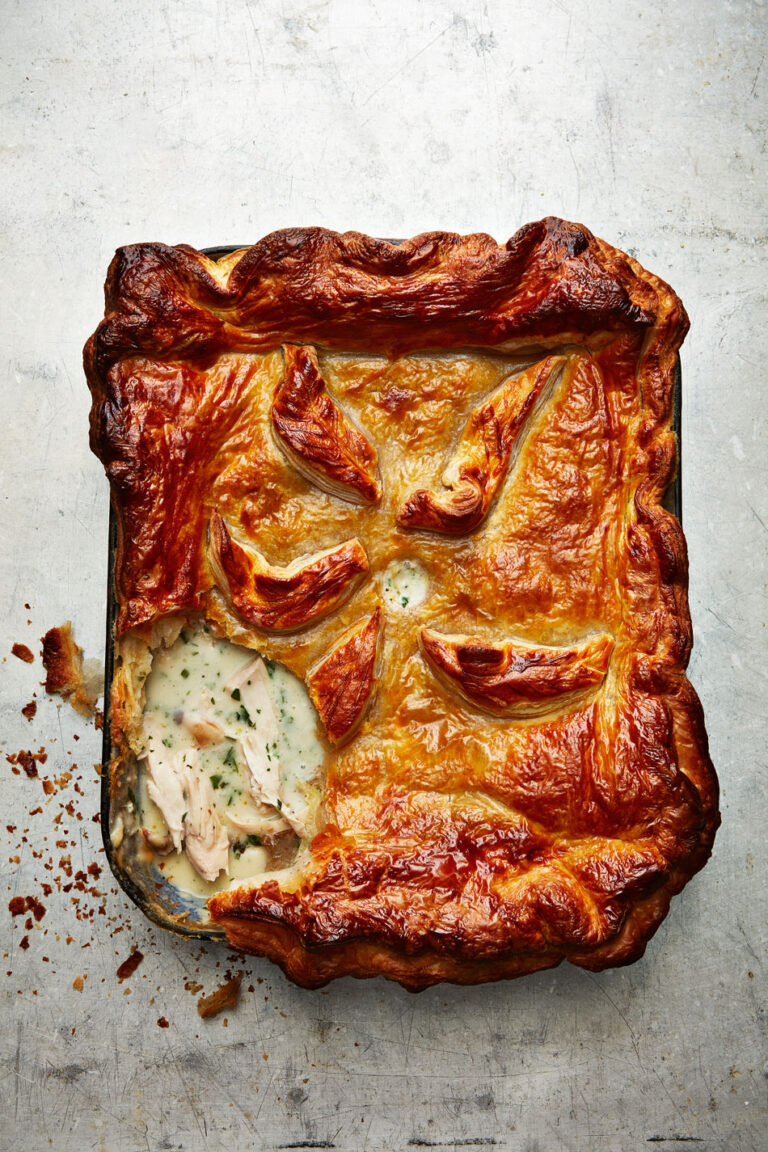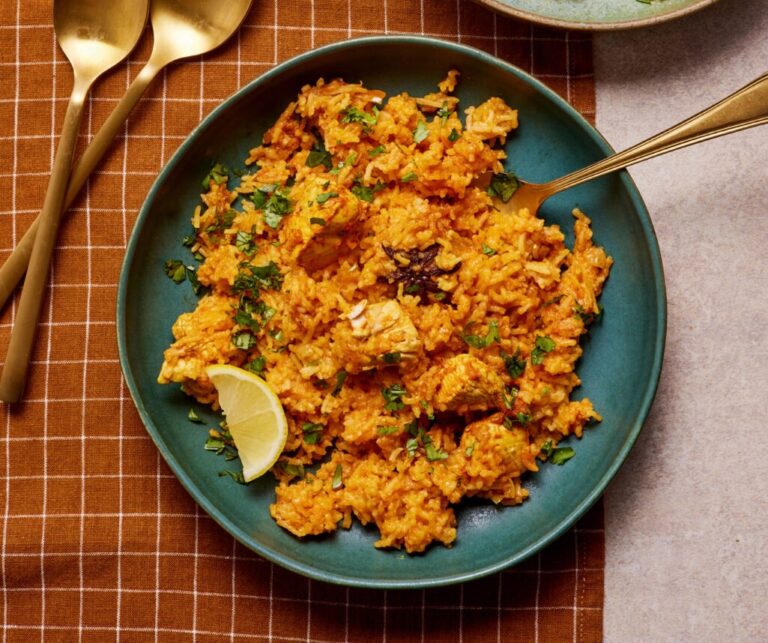Self-taught cook and recipe developer Meliz Berg has amassed over 200,000 Instagram followers thanks to her simple, comforting recipes that celebrate the melting pot that is Turkish-Cypriot cuisine. Her debut cookbook, Meliz’s Kitchen, distils the vast and varied nature of the food that defined her childhood and heritage, and with over 100 recipes, there’s something that will appeal to every kind of cook.
There are lots of things to love about this gorgeous cookbook – below, we’ve listed the top 10 of them.
From the book
Buy From
1. Meliz’s Kitchen has simplicity and ease at its heart, with dedicated chapters for one-pot dishes, stovetop recipes, hearty meals and traybakes from the oven, barbecue feasts, and quick midweek meals. The recipes themselves are accessible and easy to follow, with accompanying visuals and since the chapters are helpfully organised by cooking method, this cookbook is a handy resource to navigate when you’re looking for the perfect recipe in a pinch.
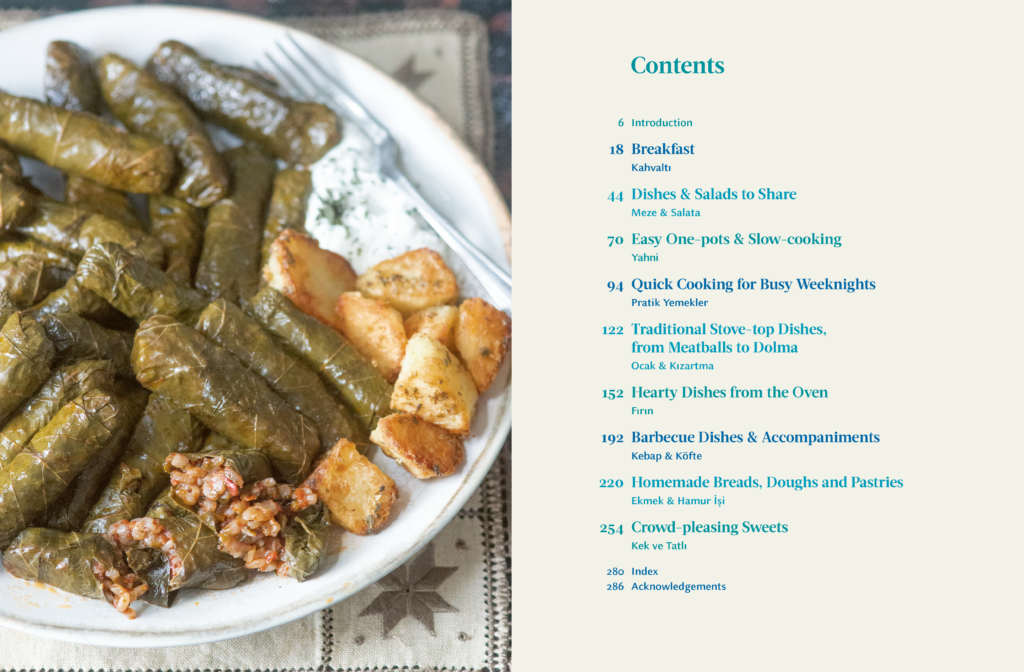
2. This book is a one-stop-shop for all things Turkish-Cypriot food and culture. Featuring a guide to key ingredients, flavours, and even recommended suppliers, Meliz’s Kitchen is informative and practical from the start. Recipes cover everything from the classics (think hummus, lamb and Chicken Kebabs, stuffed vine leaves, and baklava), to lesser-known dishes like kıymalı taze fasulye yahni (green bean and minced beef stew), bakla salatası (broad bean salad), and karpuz macunu (watermelon preserve). You’ll even learn what pairs well with a strong Turkish coffee, or spiced Cypriot tea (for which there is also a recipe).
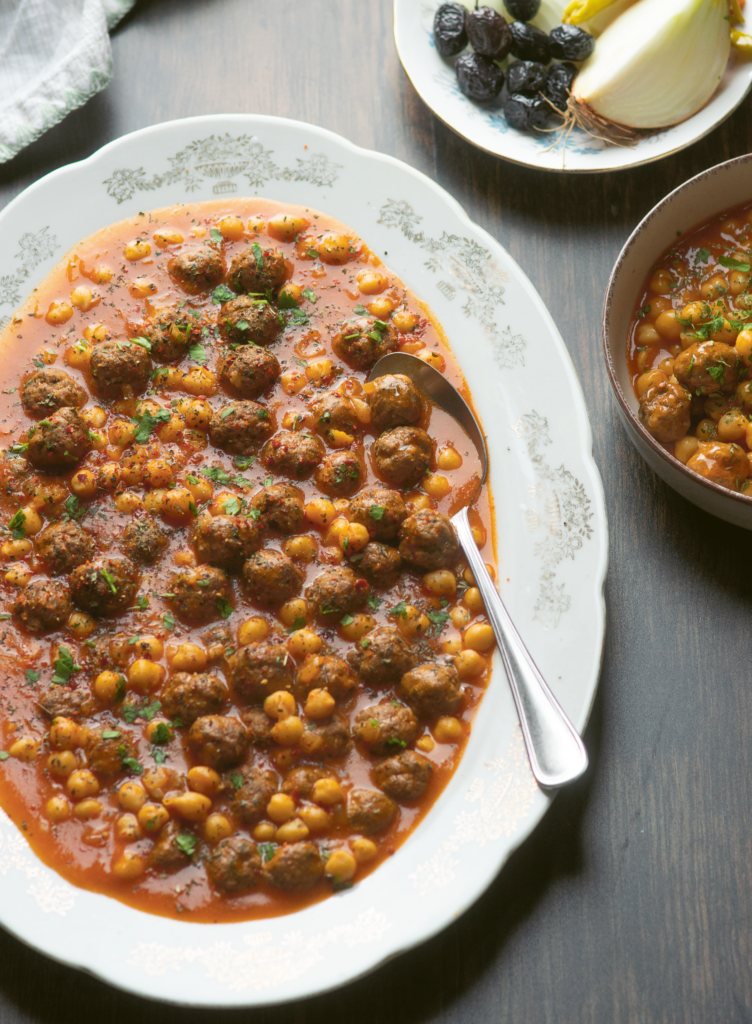
3. It’s a love letter to comfort food and family cooking. Filled with anecdotes, childhood memories, and details of how the dishes have become a part of her life, Meliz’s Kitchen is not only an informative guide to Turkish-Cypriot cuisine but also a cookbook with deeply personal touches.
4. For anyone in need of breakfast inspiration, this is the cookbook for you. With a dedicated breakfast chapter, Meliz shares 10 different recipes including spiced scrambled eggs, Sour Cherry Jam, gorgeous filled flatbreads, and Tahini, Carob and Cinnamon Honey Pancakes – plus a guide to putting on the ultimate spread for lazy Sunday mornings.
5. Meliz mixes traditional and original dishes. Authentic, home-cooked meals are complemented by her own take on Turkish-Cypriot flavours and staple ingredients. Take the deceptively simple yet rich cheese and halloumi toastie, which combines two types of cheese, Cypriot seeded bread, honey, cinnamon, and dried mint.
6. There are plenty of meatless dishes and dietary adaptations. In addition to the array of salads, dips, stews, and desserts that are vegetarian (and in some cases, vegan), Meliz has included handy notes on how to make some of her recipes meat- or gluten-free, such as swapping minced beef for finely chopped mushrooms in the meat-filled bulgur wheat cones, or using quinoa instead of bulgur wheat for the fine bulgur wheat salad.
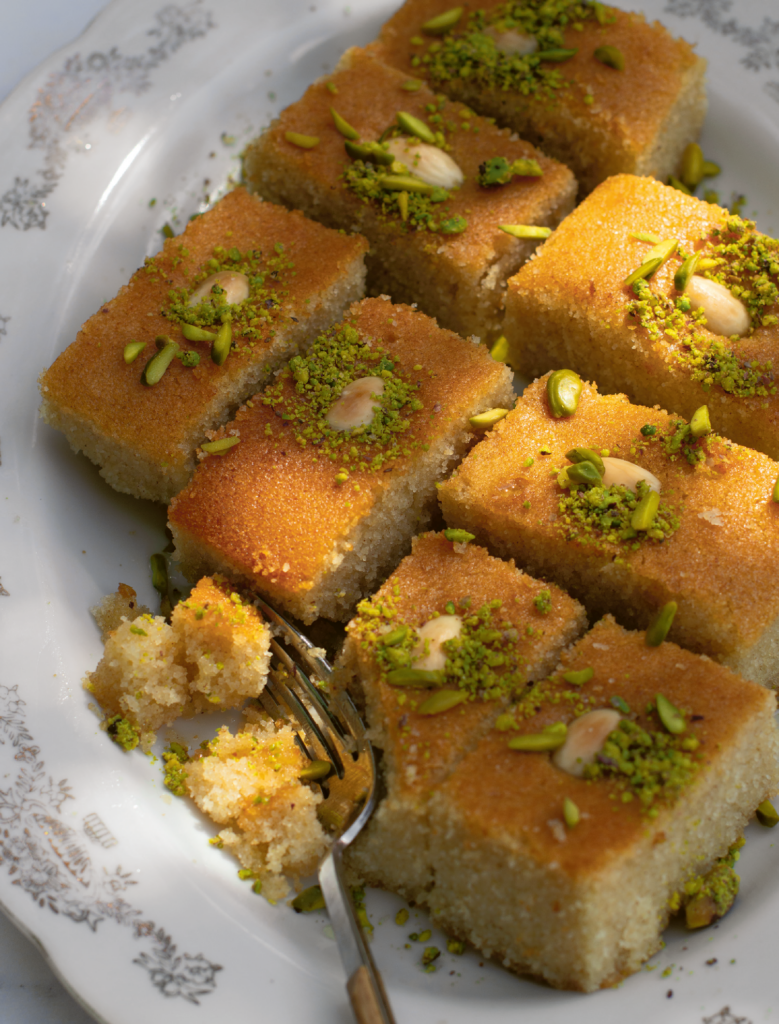
7. The “Crowd-Pleasing Sweets” chapter is a sweet tooth’s paradise. While Meliz admits in the book that she is not a sweet tooth, when she does opt for a non-savoury treat, she says, “it will usually be the most sugar-laden, syrup-drenched offering on the menu.” Find multiple recipes for nutty, syrupy desserts that are classic to the region, such as the super-simple semolina helva.
8. Meliz’s Kitchen is also a baker’s paradise. From her Meyrem Nene’s spinach pies, to tahini pastries, to the mouth-wateringly savoury halloumi, olive and herb loaf, there are plenty of opportunities for budding bakers to get their fix, found dotted throughout the cookbook, as well as in the dedicated “Homemade Breads, Doughs and Pastries” chapter.
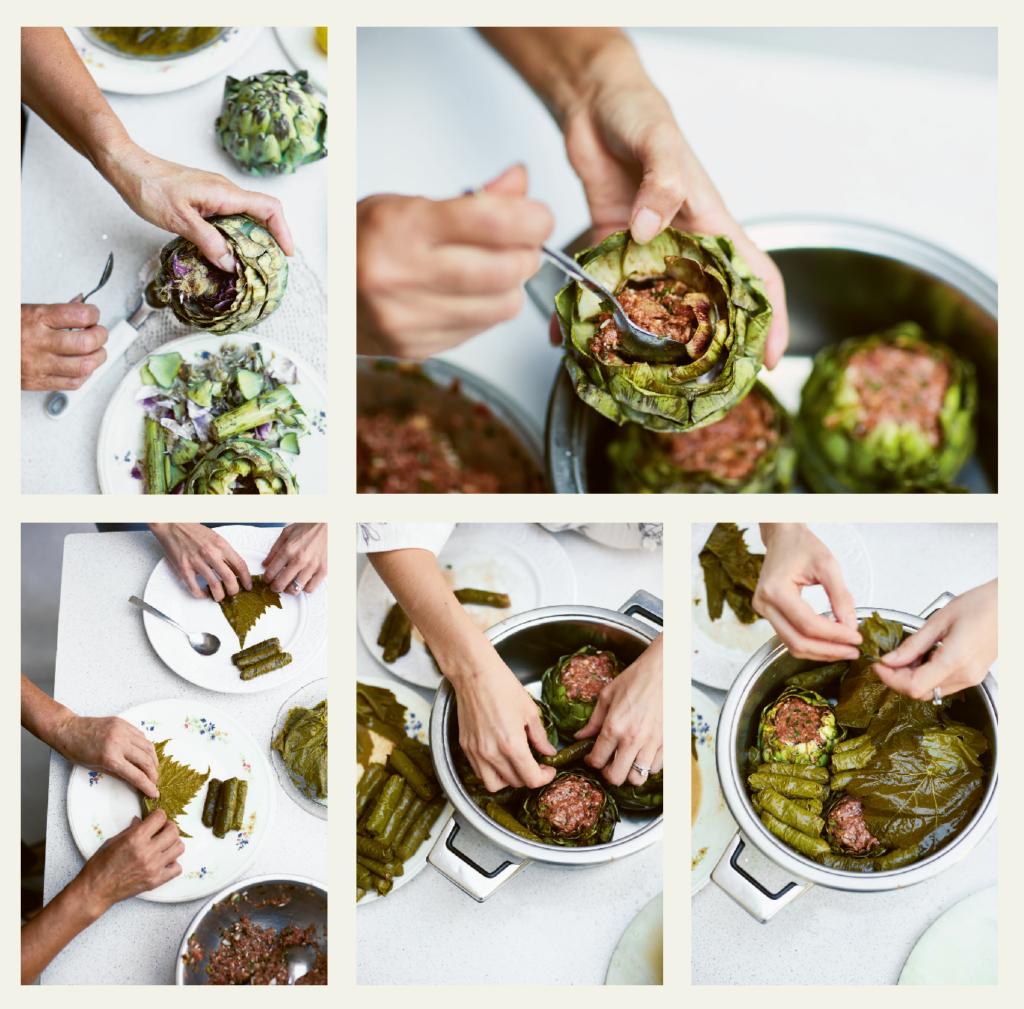
9. You’ll learn plenty of Turkish words and phrases. Every recipe includes the Turkish name for the dish, as do key staple ingredients wherever mentioned in the book. Reading this book, you’ll even pick up a few words for family members and a rather charming Turkish-Cypriot idiom about spinach roots…
10. The photography alone is enough to whisk you away to Cyprus. Sun-dappled meze spreads, vibrant salads, fuss-free bowls of comforting stew, and eclectic china dishes (often laid over doilies or homely tablecloths) highlight that this food is meant to be lovingly prepared and enjoyed around a big outdoor table in the sun, surrounded by friends and family.
From the book
